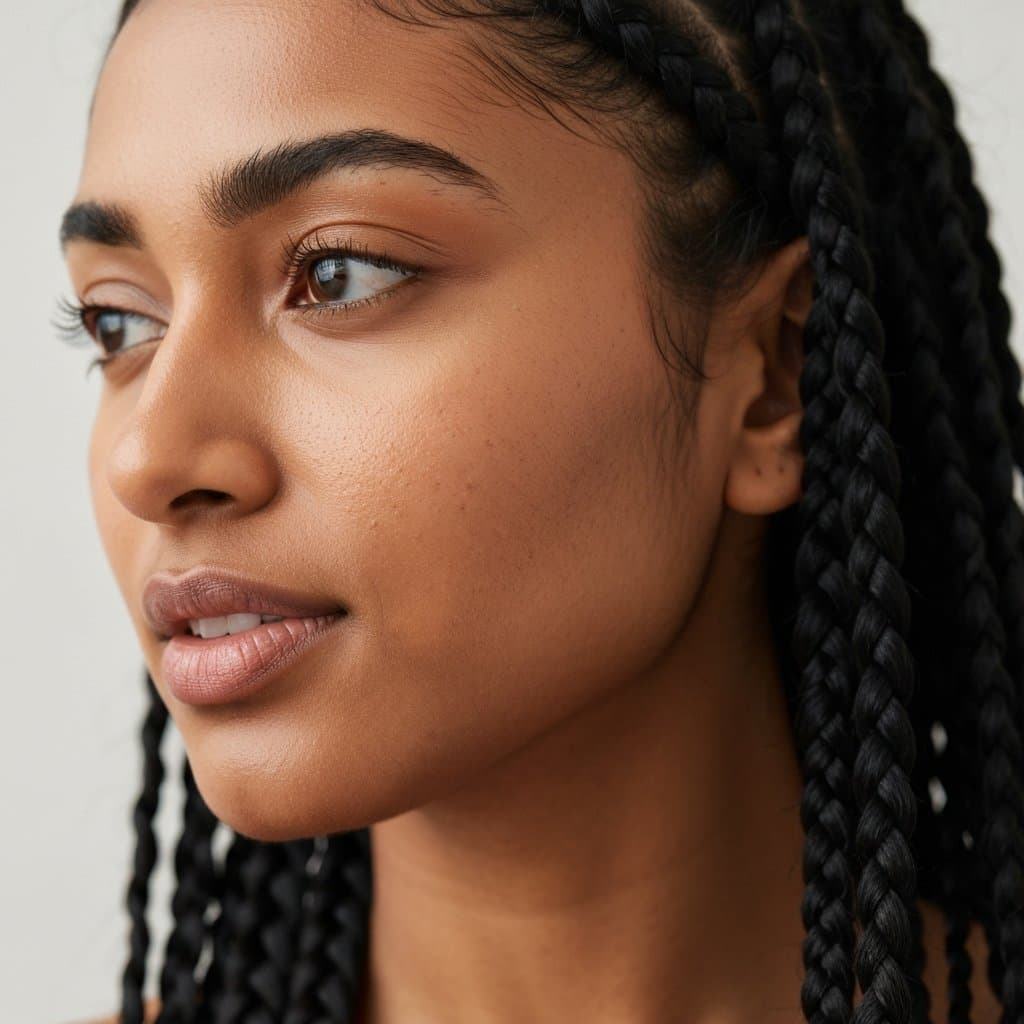The Butterfly Cut: Your Ultimate Guide to 2025's Hottest Layered Hairstyle | Is It Right for You?
The Ultimate Hair Transformation: Is the Butterfly Cut Right for You?
Step into any forward-thinking hair salon, scroll through your social media feed, or glance at a red carpet, and you'll inevitably encounter 2025's most sought-after hairstyle: the butterfly cut. This stunning, layered look has taken the beauty world by storm, offering a brilliant fusion of '70s shag and '90s supermodel volume. It promises the best of both worlds—the face-framing dynamism of a shorter cut with the luxurious length of long hair. But is this viral sensation the right choice for your personal style and hair type? This comprehensive guide will explore every facet of the butterfly haircut, from its core structure to styling, maintenance, and customization, helping you decide if it's time for your own ultimate hair transformation.
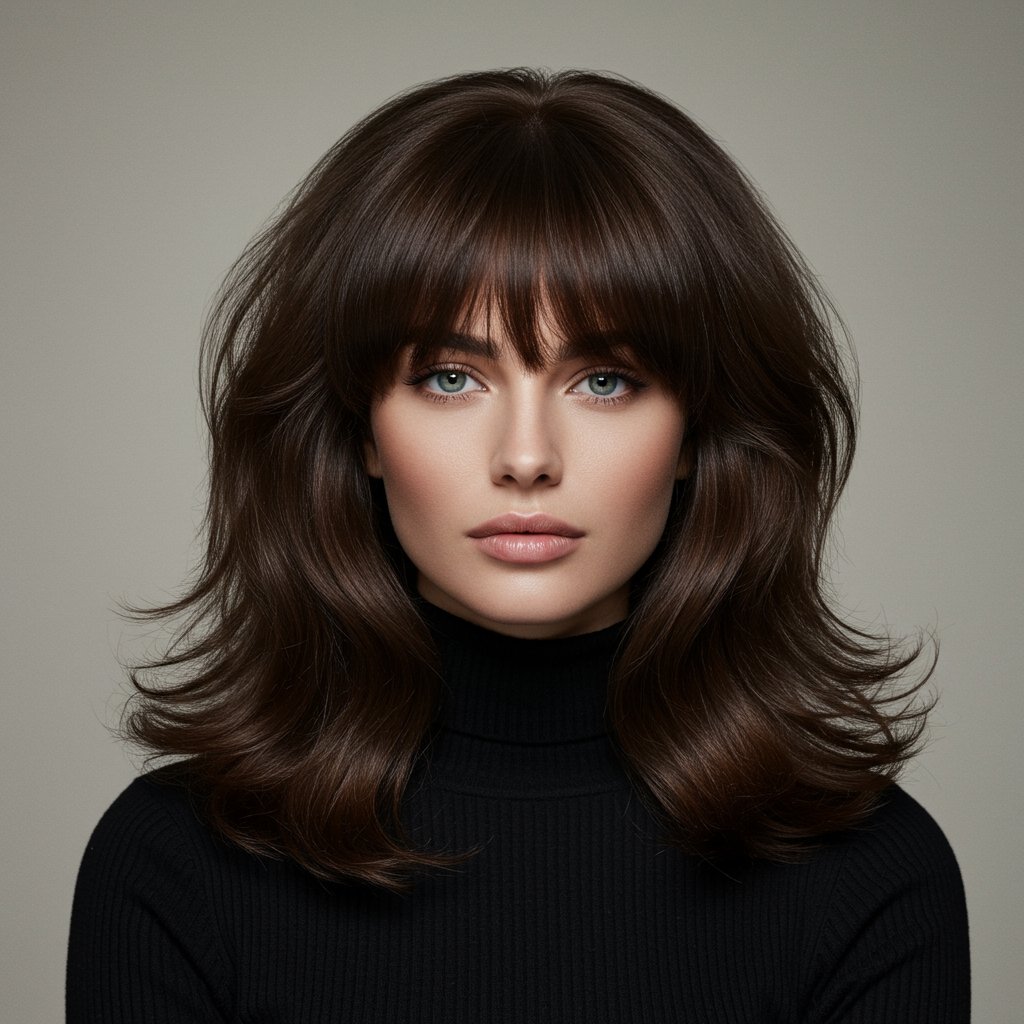
The butterfly cut is more than just a passing trend; it's a masterclass in hair architecture. It creates movement, builds incredible volume, and offers a versatile look that can be styled from effortlessly chic to full-on glam. Whether you have long locks craving a refresh or medium-length hair seeking more shape, this haircut could be your answer. We will delve into the ideal hair types and face shapes for this style, explain how to communicate your vision to a stylist, and provide a step-by-step guide to recreating that salon-fresh blowout at home. Get ready to discover everything you need to know about the enchanting butterfly cut.
---
What Exactly Is the Butterfly Cut?
The magic of the butterfly cut lies in its clever, dual-length illusion. It’s a heavily layered haircut strategically designed to mimic the shape of a butterfly's wings—shorter and feathery on top, and longer and flowing underneath. The technique involves separating the hair into two distinct sections. The top section is cut to a shorter length, often falling around the chin or shoulders, creating beautiful face-framing layers and curtain bangs that sweep away from the face. This shorter layer is what provides the incredible volume and movement at the crown, giving the impression of a much shorter, bouncier haircut from the front.

Beneath this voluminous top layer, the rest of the hair is kept significantly longer, cascading down the back. This preserves the overall length, so you don't have to sacrifice your long hair for a more dynamic style. When the hair is down, the layers blend seamlessly, creating a soft, feathered texture that looks both modern and timelessly glamorous. The name itself evokes the delicate, fluttering movement of the layers, which is precisely the effect an experienced stylist aims to achieve. It’s a haircut that looks just as stunning in motion as it does in a still photograph.
The Art of Illusion: Shorter Layers, Longer Length
The core concept of the butterfly cut is this beautiful deception. When you pull the top layers forward, they resemble a chic, shoulder-length bob. This allows for styling versatility; you can even tuck the longer layers away to create a faux bob for a day. The shorter layers are what do the heavy lifting in terms of volume. By removing weight from the top of the head, the hair gains natural lift and bounce. These layers are typically cut using a combination of techniques, including feathering and point cutting, to ensure they are soft and blendable, avoiding any harsh lines.
Butterfly Cut vs. The Rachel vs. The Shag: Key Differences
While the butterfly cut shares DNA with other iconic layered styles, it has a distinct identity. The '90s "Rachel" cut, made famous by Jennifer Aniston, featured choppy, defined layers that flicked inward or outward, primarily concentrated around the face. The butterfly cut's layers are generally softer, longer, and more blended. The modern shag haircut is edgier, with more texture, choppiness, and often a heavier fringe, creating a rock-and-roll aesthetic. The butterfly cut is decidedly more glamorous and polished. It borrows the shag’s volume and the Rachel’s face-framing, but refines them into a softer, more romantic silhouette that emphasizes airy movement over sharp texture.
---
The Anatomy of a Perfect Butterfly Cut: Who Does It Suit Best?
One of the reasons for the butterfly cut's immense popularity is its surprising versatility. While it may seem best suited for a specific look, it can be adapted to flatter a wide range of hair types, textures, and face shapes. However, understanding its ideal canvas can help you and your stylist achieve the most breathtaking results. The key to a successful butterfly cut is ensuring the layers create volume and movement without compromising the hair's integrity or looking sparse.

Ideal Hair Types: From Wavy to Straight
The butterfly haircut truly shines on hair that has some natural body and thickness. Medium to thick hair provides the perfect foundation for the distinct layers to stand out and create that coveted voluminous shape. Straight hair can be transformed with this cut, as the layers will add much-needed movement and prevent the hair from falling flat. For those with a natural wave, the butterfly cut is a dream come true. The layers work with the hair's texture, enhancing the waves and creating a beautiful, beachy, and effortlessly chic look with minimal styling. While it can be adapted for fine hair, it requires a skilled stylist to avoid removing too much weight, which could make the ends look thin.
Face Shapes that Shine with the Butterfly Cut
The face-framing layers are a key component of this style, making it incredibly flattering for many face shapes. For oval and heart-shaped faces, the layers around the chin and cheekbones add softness and balance. On square or rectangular faces, the sweeping curtain bangs and feathered layers can soften a strong jawline. For round faces, requesting longer face-framing layers that fall below the chin can create an elongating effect, adding definition and structure. The key is customization; a talented stylist will tailor the length and placement of the shortest layers to perfectly complement your unique facial features.
---
The Consultation: How to Ask Your Stylist for the Butterfly Cut
Walking into a salon and simply asking for a "butterfly cut" can be a gamble, as every stylist might have a slightly different interpretation of the trend. To ensure you walk out with the hair of your dreams, a clear and detailed consultation is crucial. This is a collaborative process where you communicate your vision and your stylist provides their expert opinion on how to adapt it for your hair. Being prepared for this conversation is the first step toward a successful hair transformation.
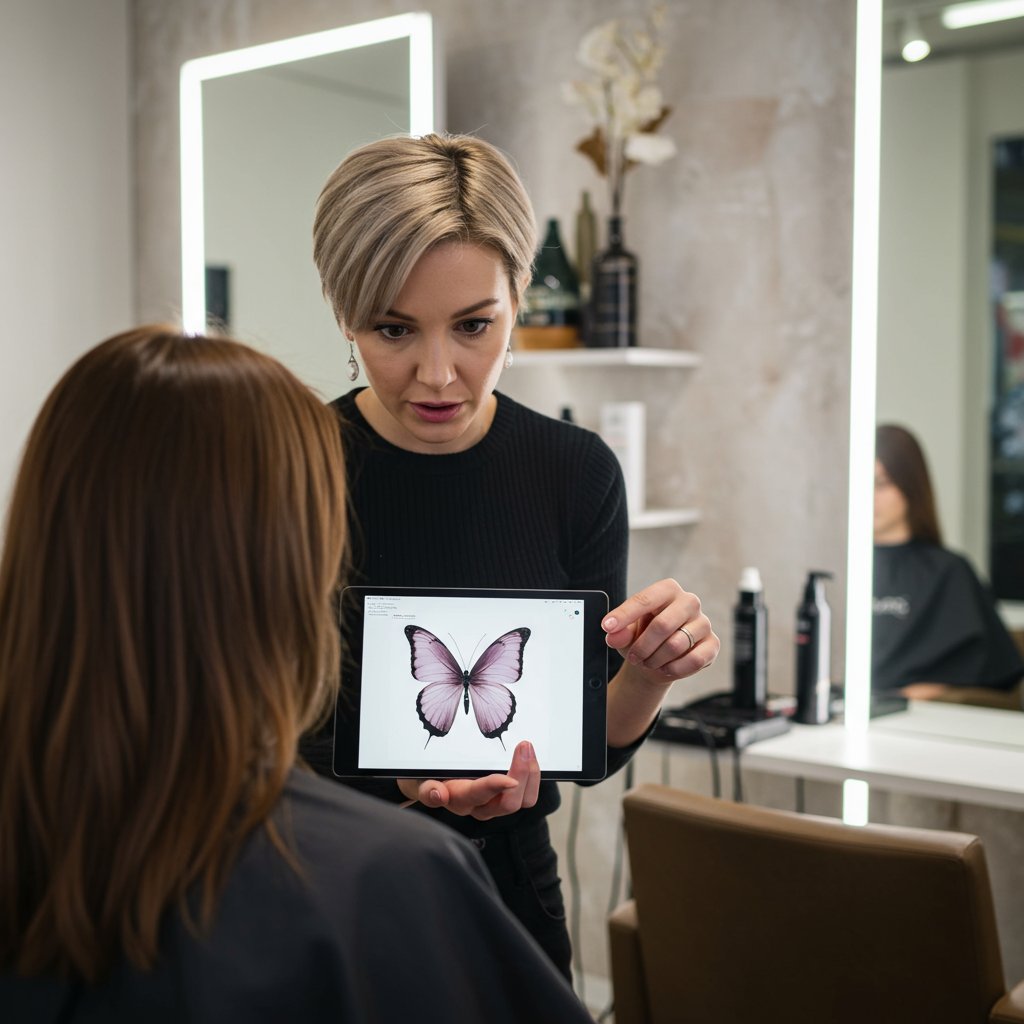
Finding the Right Visuals: Your Inspiration Board
A picture is worth a thousand words, especially in a hair salon. Before your appointment, spend time gathering high-quality images of butterfly cuts that you love. Look for examples on people with similar hair types and face shapes to your own. Save a variety of photos showing the cut from different angles—front, side, and back. This visual library will be the most effective tool for showing your stylist exactly what you're hoping to achieve, from the length of the shortest layer to the softness of the overall texture. Pinterest and Instagram are excellent resources for finding diverse and high-quality inspiration photos.
Key Terminology to Use
Beyond photos, using the right language can help refine your request. When talking to your stylist, use descriptive terms to articulate the specifics of your desired look. Mention that you want "long, sweeping curtain bangs" that blend into "soft, face-framing layers." Explain that you're looking for "significant volume at the crown" while wanting to "keep the overall length." Use phrases like "feathery ends," "blended layers," and "airy movement." Contrasting it with what you don't want can also be helpful, for example: "I want it to be softer and more blended than a traditional shag."
---
Styling Your Butterfly Cut at Home: A Step-by-Step Guide
A great haircut is only half the battle; knowing how to style it at home is what truly brings it to life every day. The beauty of the butterfly cut is that its layers do much of the work for you, but a few key techniques and products can elevate it from good to absolutely stunning. Mastering a voluminous blowout is the key to unlocking the cut's full potential and recreating that supermodel bounce.
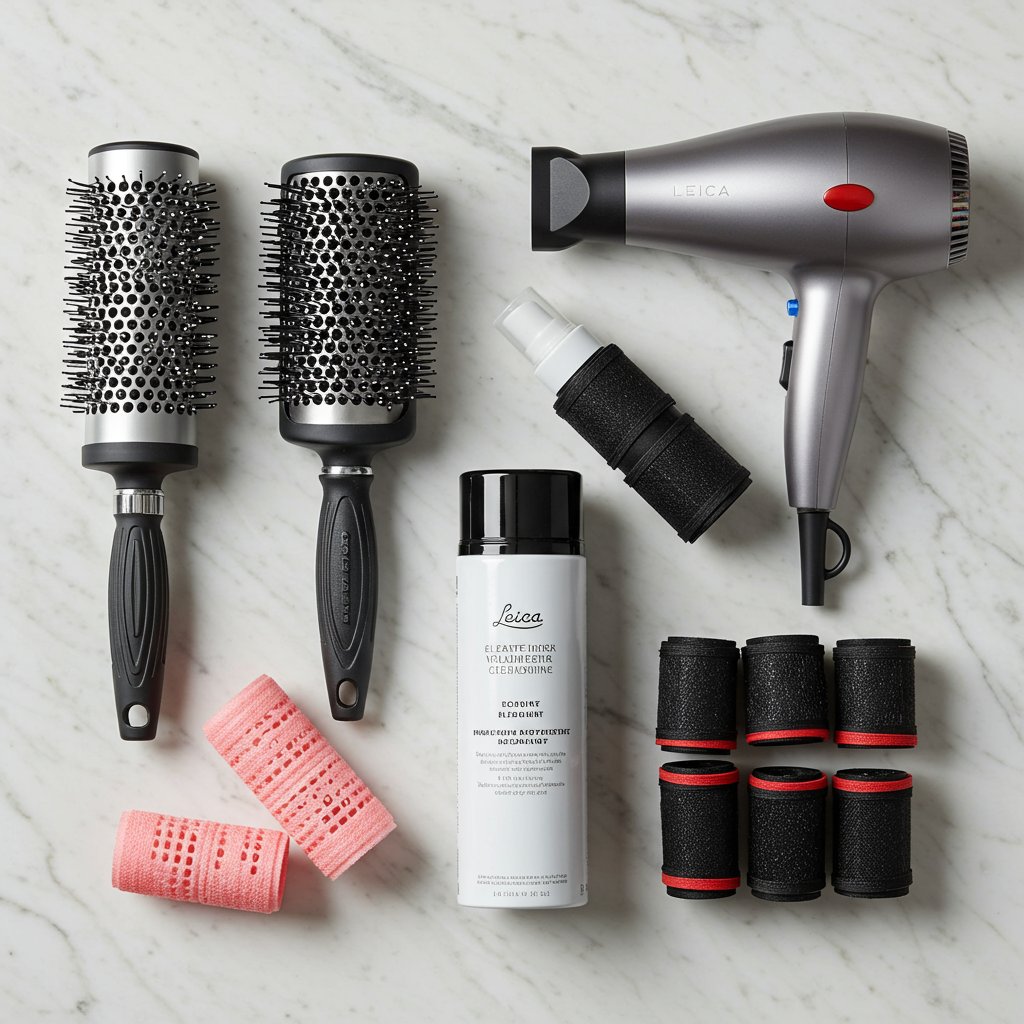
The Essential Toolkit: Products and Tools
To achieve a salon-quality finish, you'll need a few essentials in your arsenal. Start with a good volumizing mousse or root-lift spray, applied to damp hair at the roots to build a strong foundation for lift. A quality heat protectant is non-negotiable to keep your layers healthy and shiny. For tools, a powerful hairdryer with a concentrator nozzle is a must. The true hero of the butterfly cut blowout is a large round brush (2-3 inches in diameter) for creating smooth, bouncy curves. For extra hold and glamour, consider investing in a set of large velcro rollers to set the hair while it cools.
The Blowout Technique for Maximum Volume
- Prep: After washing, gently towel-dry your hair and apply your root-lift and heat protectant products from roots to ends.
- Rough Dry: Begin by rough-drying your hair with your head flipped upside down until it's about 80% dry. This creates initial volume all over.
- Section and Style: Flip your head back up and divide your hair into manageable sections. Start with the shorter, top layers. Take a section of hair, place the round brush at the root, and aim the hairdryer's nozzle down the hair shaft. Pull the brush up and away from your scalp to create lift, rolling the ends under or slightly outward.
- Set the Shape: For maximum volume, once a section is dry, roll it up into a large velcro roller while it's still warm and secure it. This helps the hair cool in that voluminous shape. Focus the rollers on the top 'mohawk' section and the face-framing pieces.
- Finish: Once all sections are dry and the rollers have cooled completely, gently remove them. Shake your hair out with your fingers, and finish with a light-hold hairspray or a texturizing spray to enhance the layers and add hold.
---
The Long-Term Commitment: Maintaining Your Butterfly Haircut
To keep your butterfly cut looking its best, regular maintenance is key. The distinct shape of the cut relies on the precise length of its layers, particularly the shorter face-framing pieces. Over time, as your hair grows, these layers can lose their shape and the overall effect can become less defined. Understanding the upkeep required will help you enjoy your new style for months to come.
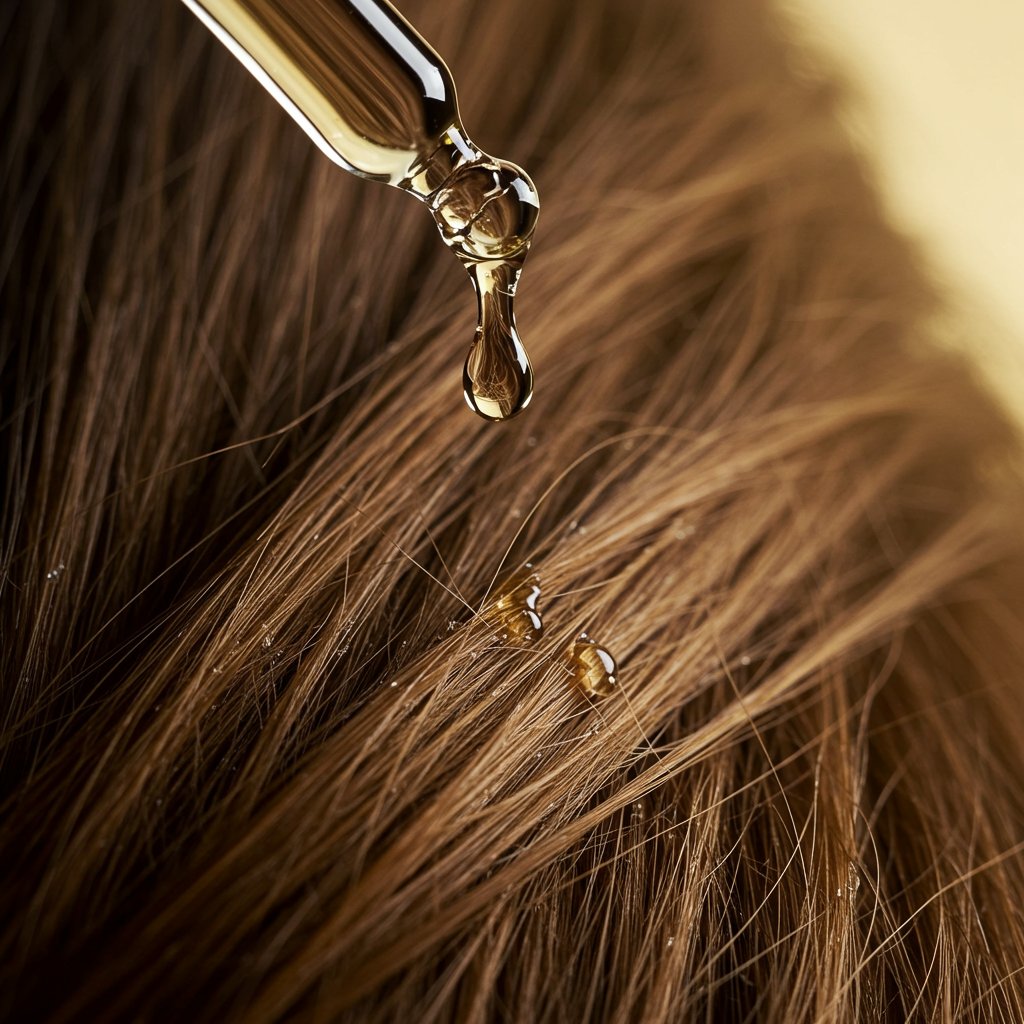
How Often Should You Get a Trim?
To maintain the integrity and shape of your butterfly haircut, plan on visiting your salon for a trim every 8 to 12 weeks. This timeframe is generally sufficient to dust the long ends and, more importantly, reshape the shorter top layers and curtain bangs. If your hair grows particularly fast, or if you prefer the layers to stay at a very specific length (e.g., exactly at the chin), you might opt for a quicker touch-up every 6 to 8 weeks. Regular trims not only preserve the style but also prevent split ends, keeping your layers looking healthy and airy.
At-Home Hair Care for Healthy Layers
Healthy hair is the best canvas for any haircut. Since the butterfly cut involves significant layering and often heat styling, focusing on hair health is crucial. Incorporate a weekly deep conditioning mask or treatment into your routine to replenish moisture and keep your ends from becoming dry or brittle. Use a lightweight leave-in conditioner after every wash to detangle and protect. When styling, always use a heat protectant. Healthy, hydrated hair will have more natural bounce and shine, which will make the layers of your butterfly cut look even more spectacular.
---
Butterfly Cut Variations: Customizing the Trend
The standard long-haired butterfly cut is just the beginning. This versatile layering technique can be adapted and customized to suit different lengths, styles, and preferences. By working with a skilled stylist, you can create a version of the butterfly cut that is uniquely yours, whether you prefer a shorter look, a different fringe style, or want to enhance the layers with color.
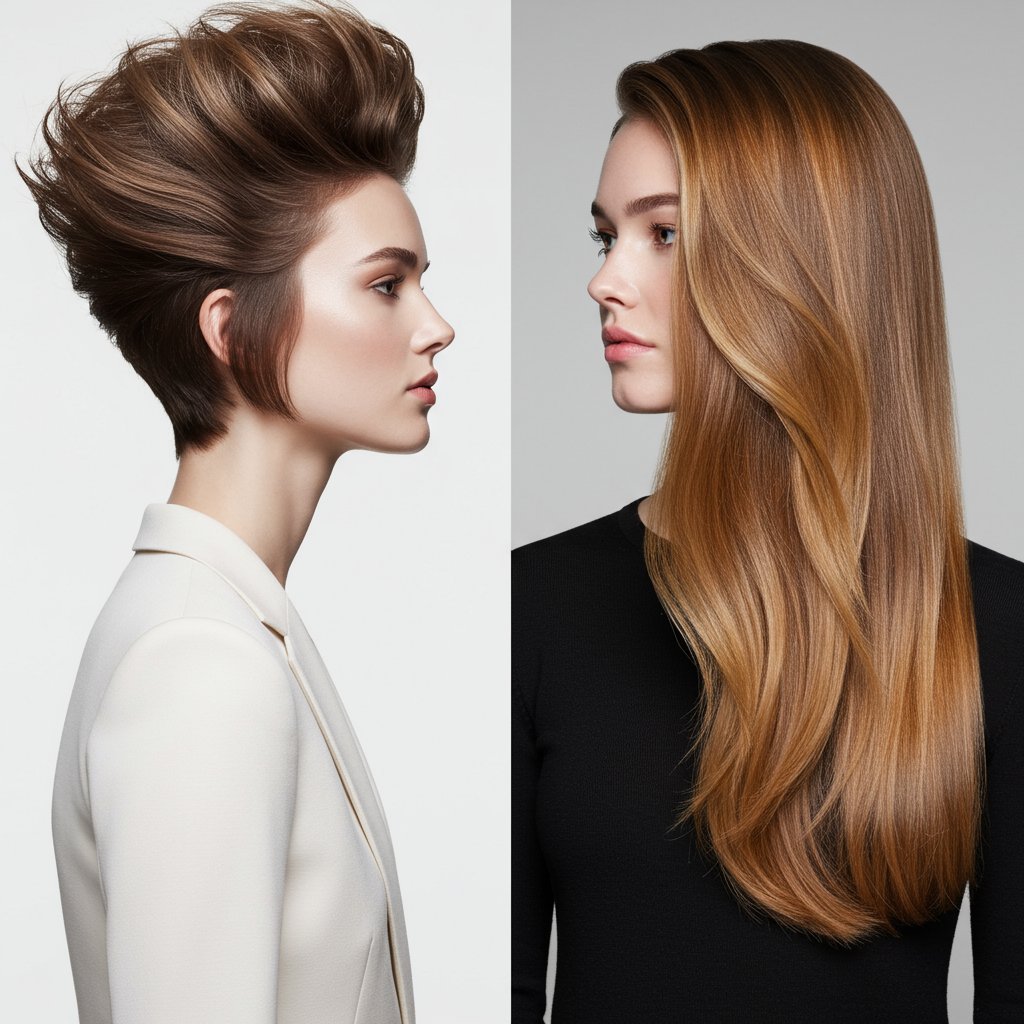
The Butterfly Bob: A Shorter, Chic Take
For those who love the volume and movement of the butterfly cut but prefer shorter hair, the "butterfly bob" or "butterfly lob" is a perfect choice. This variation applies the same layering principle—shorter layers on top, longer layers underneath—to a bob or long-bob length. The result is a texturized, voluminous bob with incredible shape and movement, offering a modern twist on a classic cut. It's a fantastic option for adding body to shoulder-length hair.
Incorporating Color: Balayage and Highlights
Color can be a powerful tool to accentuate the beautiful layers of a butterfly cut. Techniques like balayage, where highlights are hand-painted onto the hair, can create a sun-kissed, dimensional effect that makes the layers pop. Strategically placed highlights around the face (a "money piece") can draw even more attention to the flattering face-framing pieces. The movement of the cut enhances the play of light and shadow created by the color, resulting in a dynamic, high-impact look.
---
Tips from the Pros: Elevating Your Butterfly Cut
Once you have the cut, a few professional secrets can help you make the most of it. Stylists agree that the finishing touches are what separate a good hairstyle from a great one. Texture is your best friend with a butterfly cut. A light mist of dry texturizing spray through the mid-lengths and ends can add that perfectly imperfect, lived-in feel and enhance the separation between the layers. Don't be afraid to use your fingers to tousle and position the layers around your face.
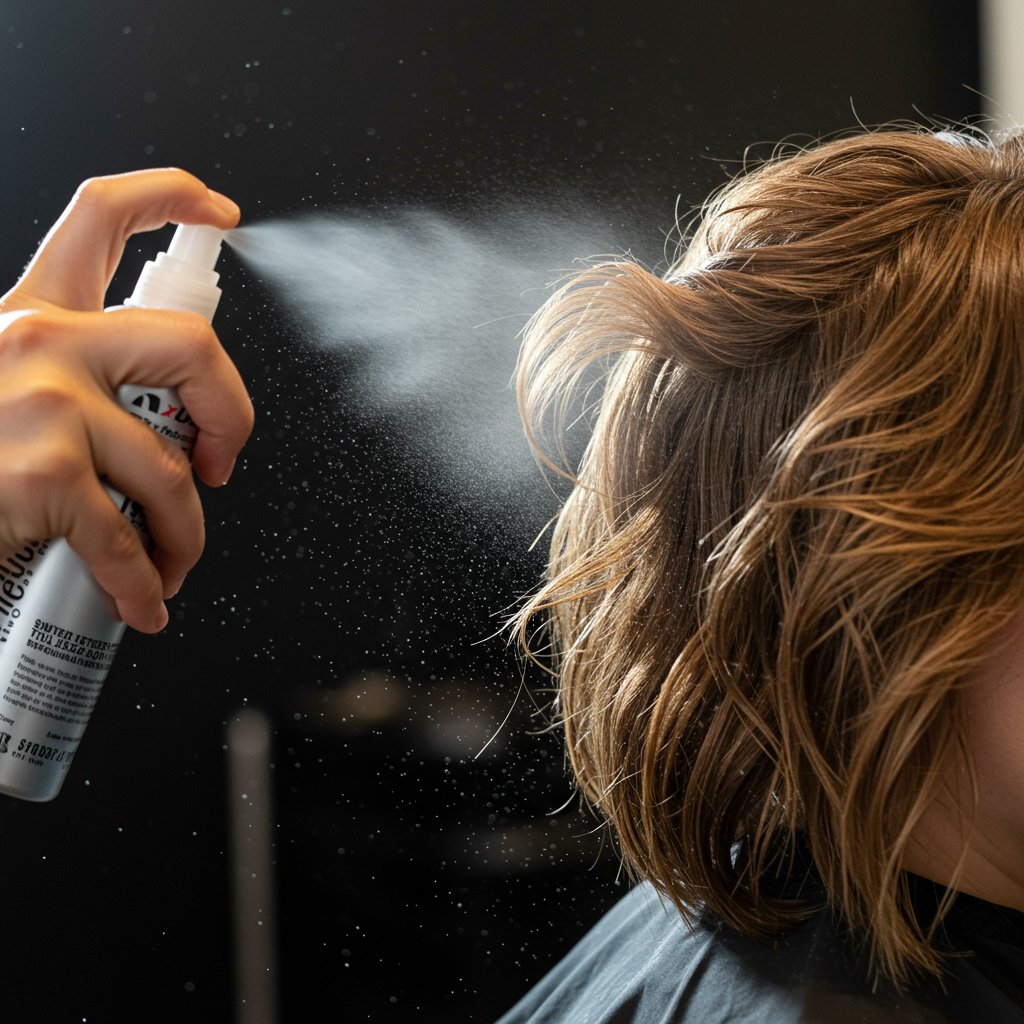
Another pro tip is to focus on scalp health. Volume starts at the root, so using a clarifying shampoo once a week can remove product buildup that weighs hair down. A healthy, clean scalp promotes better hair growth and natural lift. Finally, embrace second-day hair. The butterfly cut often looks even better the day after washing, once the hair has settled. A bit of dry shampoo at the roots can refresh the style and boost volume, giving you that effortless, cool-girl vibe.
---
Your Butterfly Cut Questions, Answered
Q: Can I get a butterfly cut on thin or fine hair?
A: Yes, but with caution. A stylist experienced in cutting fine hair is essential. They will use specific techniques to create layers that add the illusion of volume without removing too much of the hair's overall density, which could make the ends look sparse. The focus will be on creating 'internal' or 'invisible' layers to build body.
Q: Is the butterfly cut high maintenance?
A: It's moderate in maintenance. While it grows out more gracefully than a blunt cut, it does require regular trims (every 8-12 weeks) to maintain its shape. The daily styling can be as simple as air-drying for a wavy look or more involved if you want a full, bouncy blowout. The styling effort depends on your hair type and desired finish.
Q: Does the butterfly cut work with curly hair?
A: Absolutely! On curly hair, the butterfly cut can be stunning. It helps to distribute weight, reduce the dreaded 'triangle' shape, and allow individual curls to have more definition and bounce. It's crucial to see a stylist who specializes in cutting curly hair, as they will likely use a dry-cutting technique to shape the layers according to your specific curl pattern.
Q: How is the butterfly cut different from a wolf cut?
A: The wolf cut is a hybrid of a shag and a mullet, making it much edgier and more textured. It features shorter, choppier layers on top and a more thinned-out length at the bottom. The butterfly cut is softer, more glamorous, and more blended, aiming for a bouncy, '90s supermodel look rather than a '70s rock-and-roll vibe.
Q: What's the best way to style the shorter top layers?
A: The top layers are key for volume. Using a round brush to lift them up and away from the face while blow-drying is the best method. For a quick style, you can also use a hot air brush or large-barrel curling iron to add a soft bend and direction to these pieces. Setting them in velcro rollers while they cool will give you the longest-lasting volume.
Q: Can I tie my hair up with a butterfly cut?
A: Yes, and it offers fun styling options. When you tie your hair into a ponytail or bun, the shorter face-framing layers will fall out, creating a soft, romantic, and intentionally 'undone' look. This built-in feature makes updos look effortlessly chic.
---
Conclusion: Embrace Your Transformation
The butterfly cut is more than just a haircut; it's a statement. It’s for the person who wants glamour without sacrificing ease, volume without losing length, and a timeless look with a modern edge. By blending feathered layers and face-framing pieces, it offers a dynamic silhouette that is both versatile and incredibly flattering for a wide array of individuals. It's a celebration of movement, texture, and beautifully structured volume.
If you're seeking a significant change that provides bounce, style, and the illusion of two cuts in one, the butterfly haircut might be the perfect transformation you've been waiting for. The key to success lies in a thorough consultation with an experienced stylist who can tailor the cut to your unique features and hair type. Ready to let your style take flight? It might be time to embrace the butterfly effect.

